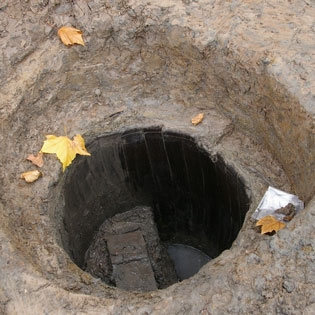
Construction, Use, Reuse, and Other Speculations About Cesspits in the Archaeological Record
David Smith, University of Birmingham.
0000-0002-5589-7201

Barrel lined latrines and rectangular wicker lined pits are common archaeological features of medieval water-logged sites, but should these be excavated and recorded in detail?
In the UK, cesspits and latrines often are considered ‘mundane’ and frequently overlooked during excavation or they are only half-heartedly recorded. Mainly this is due to a need to save time and a perception that they have little interpretative worth. This approach is the opposite of the practice in the United States were latrine pits are often investigated in deep archaeological and historical detail.
Producing a ‘biography’ of these features and looking at their construction, use, reuse, and closure and abandonment demonstrated that they can produce a fuller range of information than has previously been assumed. This discussion includes a wealth of information drawn from the historical record and from a range of modern practitioners of the art of latrine pit construction, including NGO’s and the US marine corps. For example, the decisions that determine how cess pits are built and maintained in the archaeological record and today is essentially similar. The modern practice of putting kitchen and garden waste into ‘composting latrines’ to increase the rate of breakdown of faecal, which prolongs the life of the pit may also be significant.
A similar practice may explain why so much food waste is found alongside faecal material in latrine pits in the record. The historic and modern examples also suggest that latrine pits can actually have a 10-20 year life before they fill and have to be abandoned. This means that a well maintained archaeological latrine pit is would not be a temporary feature but a long-term, almost generational, feature which would warrant considerable investment on behalf of a family.
Our own assumptions about the importance and worth of these features may also be hindering our understanding of their significance as important records of status and societal behaviour.
Take a comparison of two very different interpretations of two almost identical sets of archaeological deposits; one is interpreted as being a ritual shaft associated with the foundation of a roman town, and the other as ‘just’ a medieval latrine. These may interpretations differ because of a number of preconceived ideas about the ‘importance’ of deposits from different archaeological periods. Features such as this deserve much more attention in the UK than they currently receive.